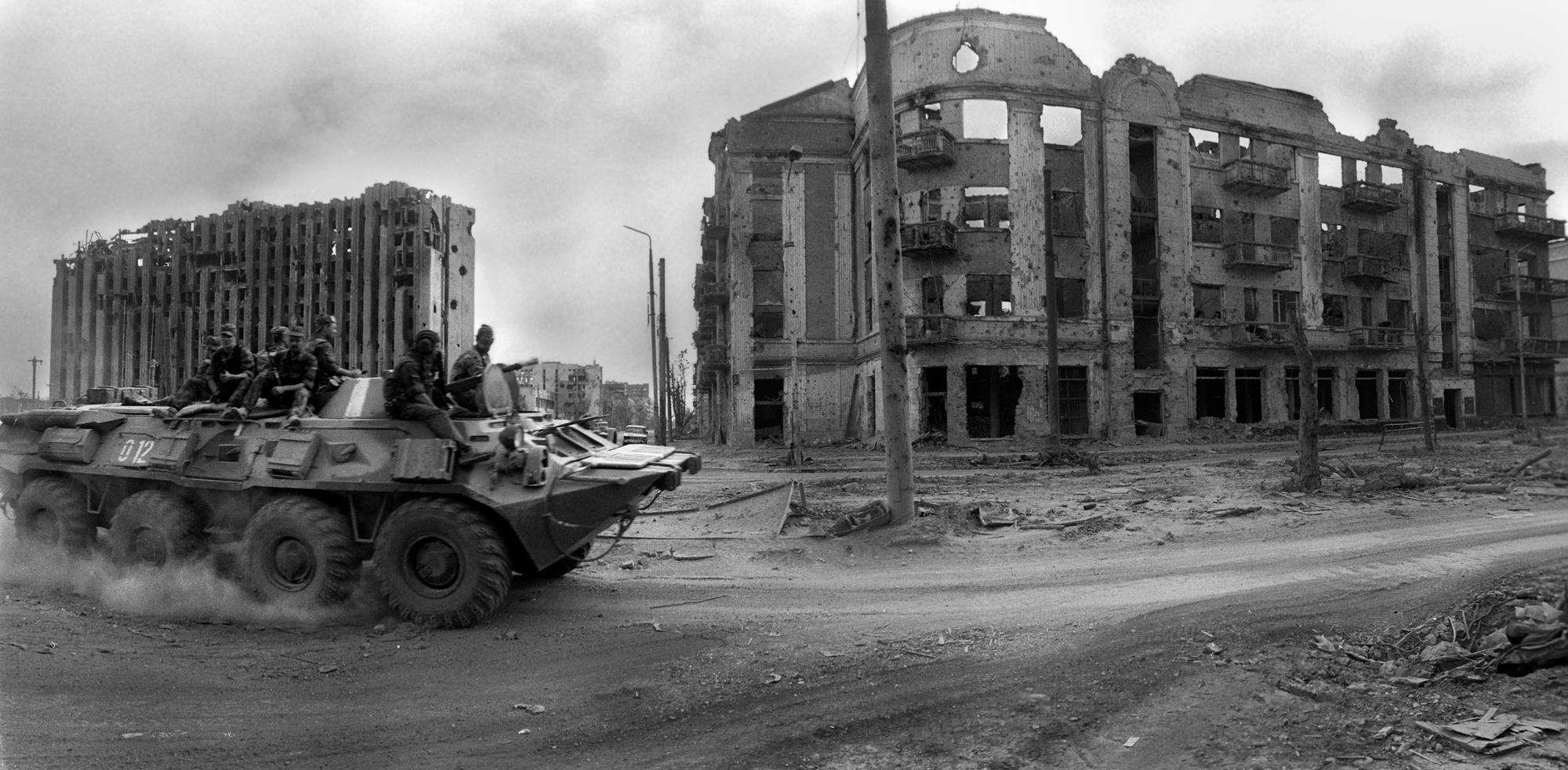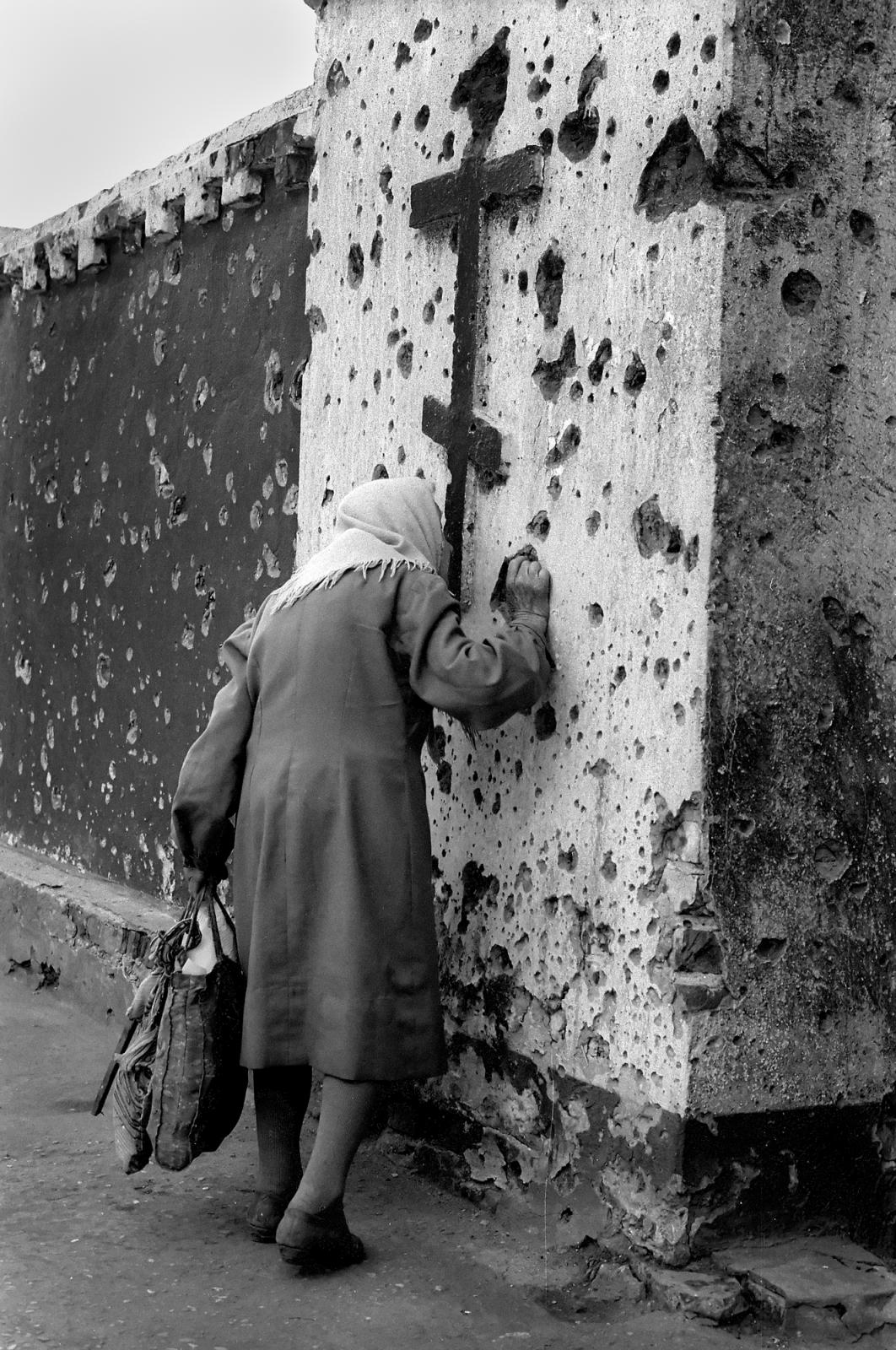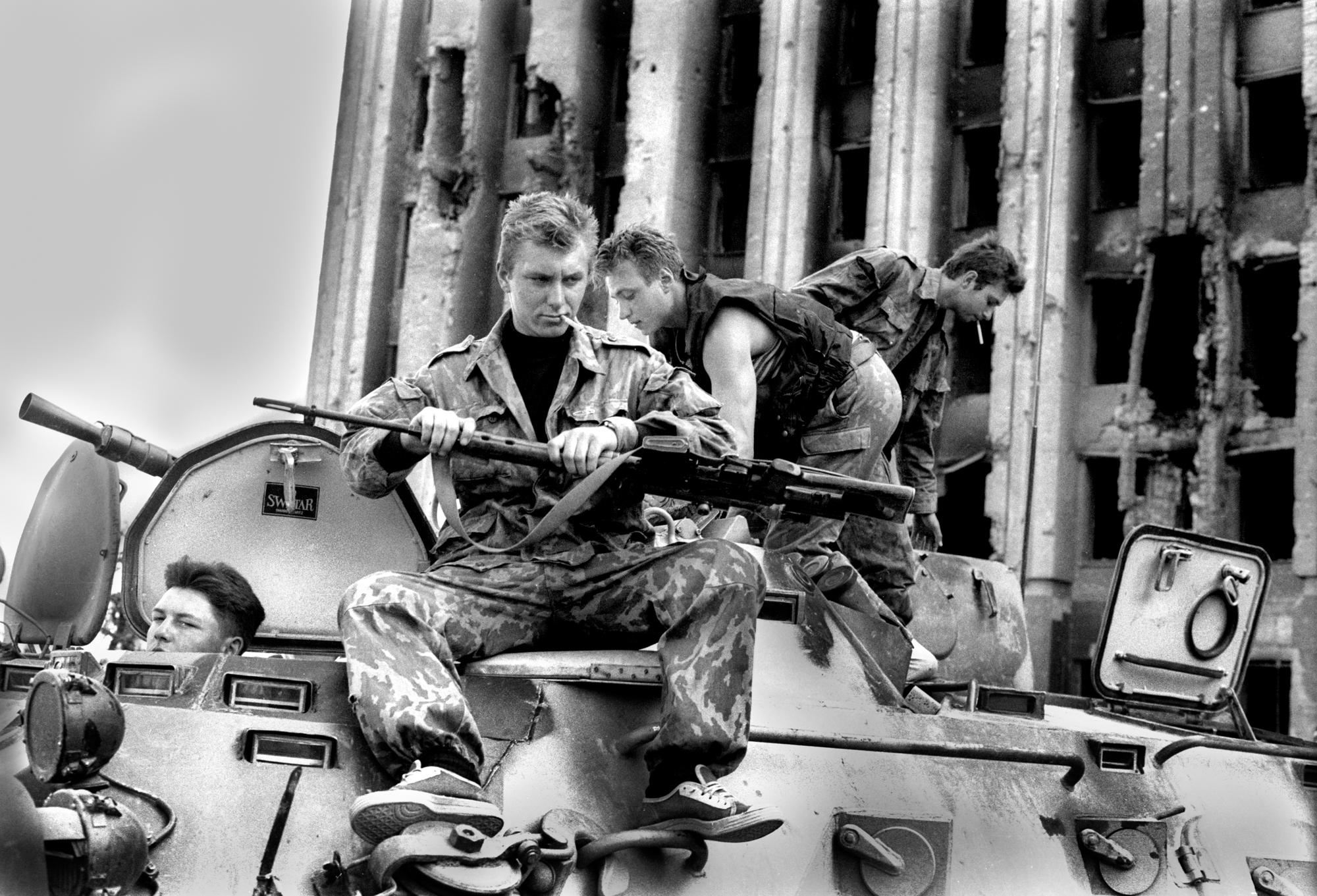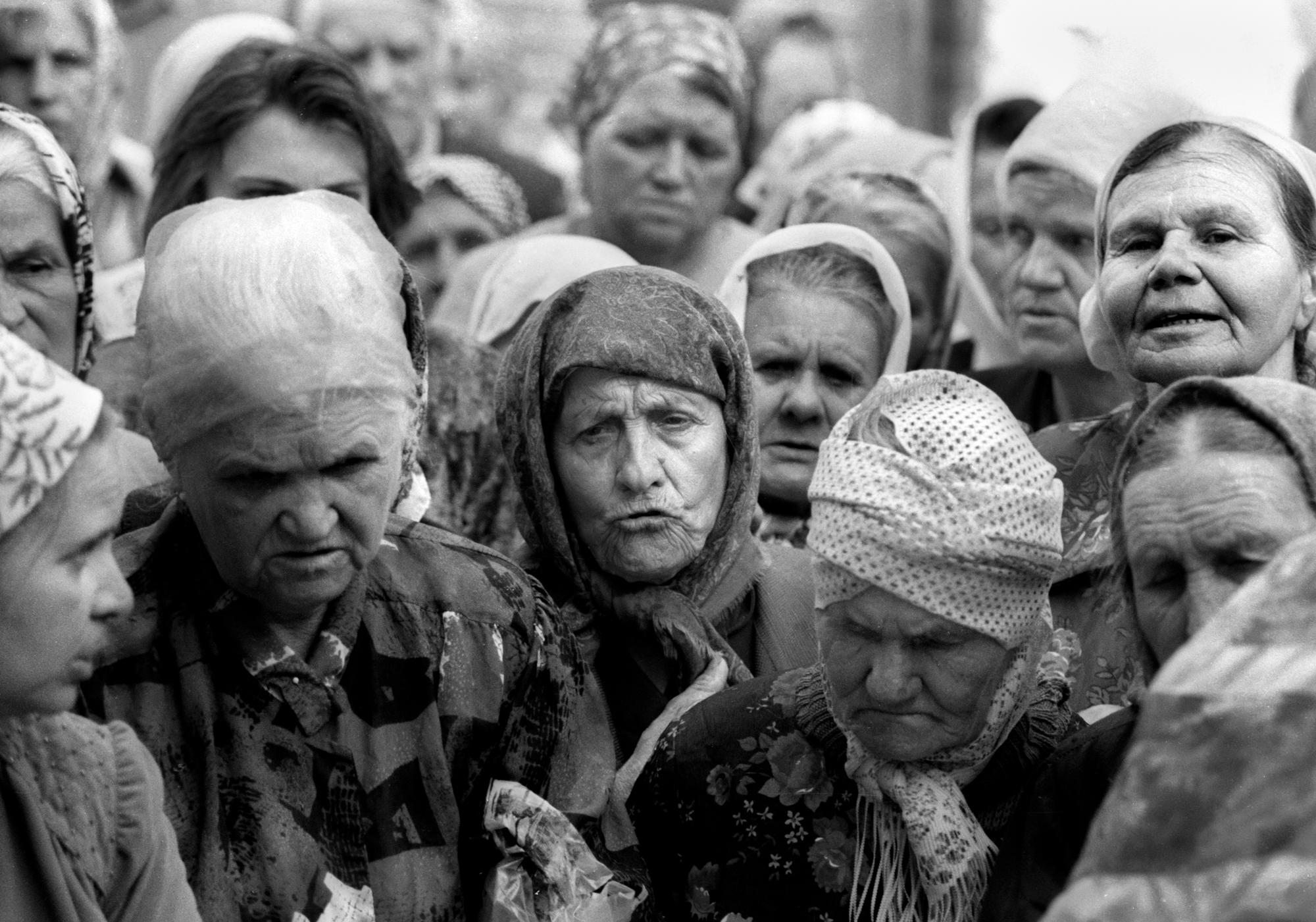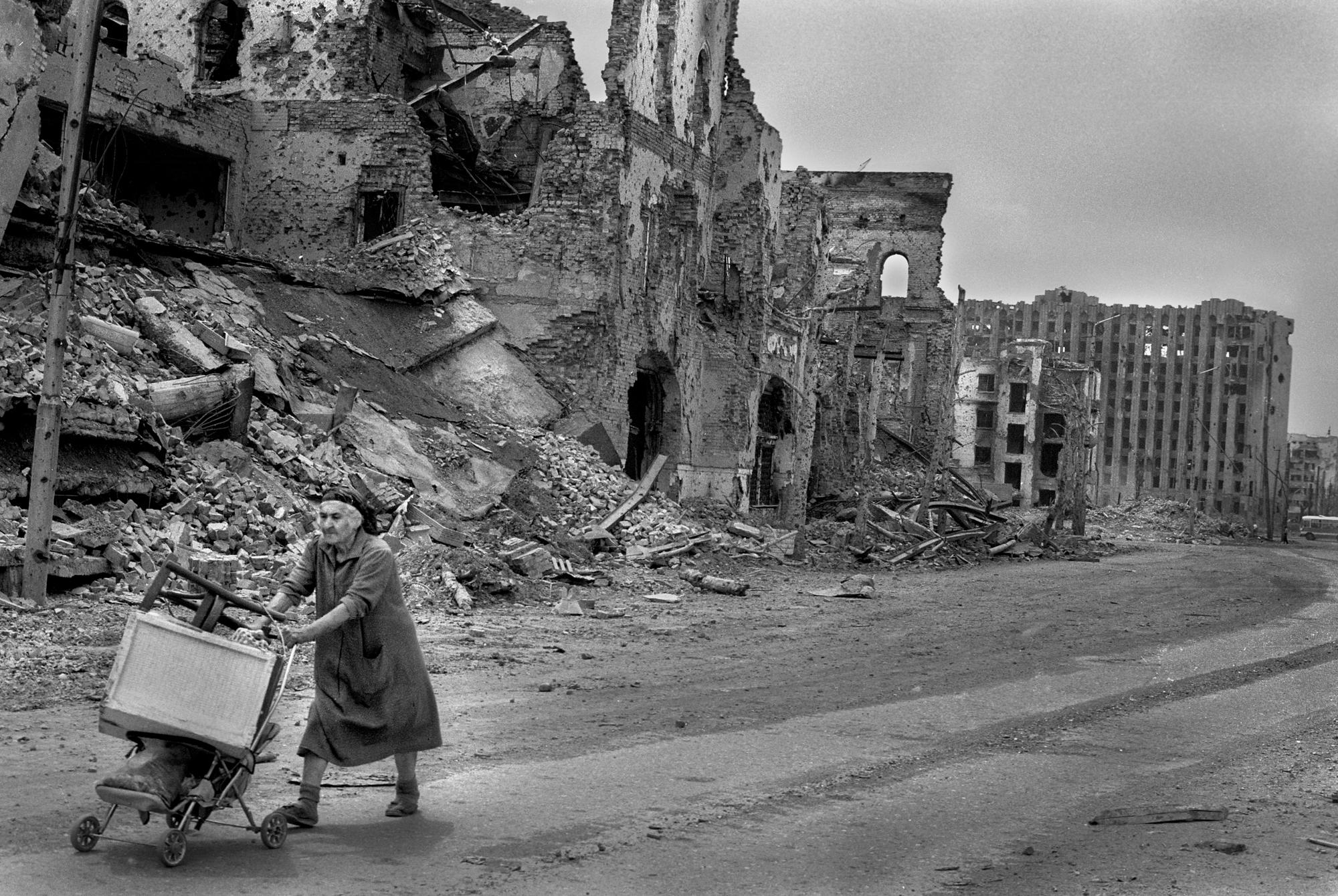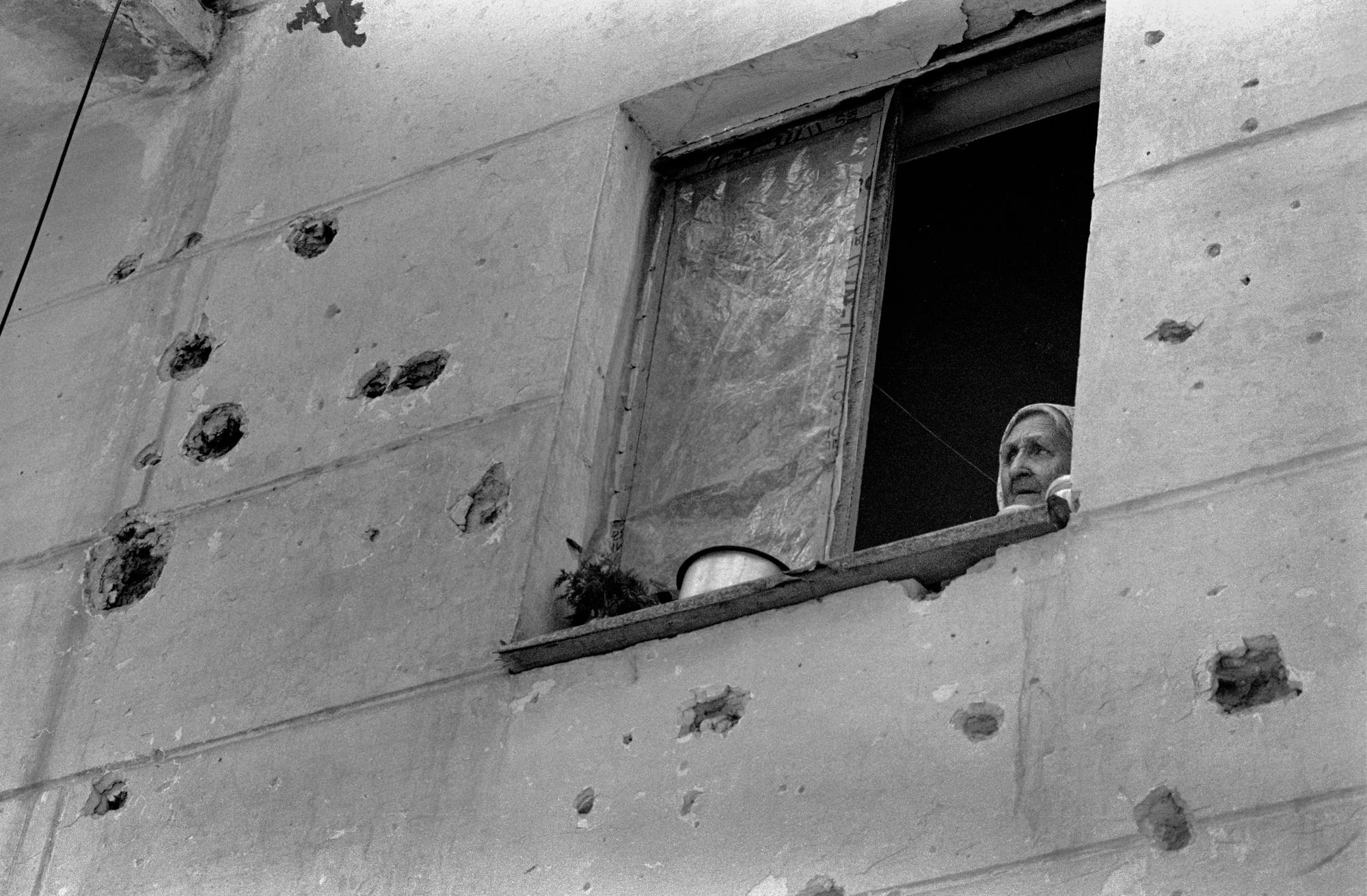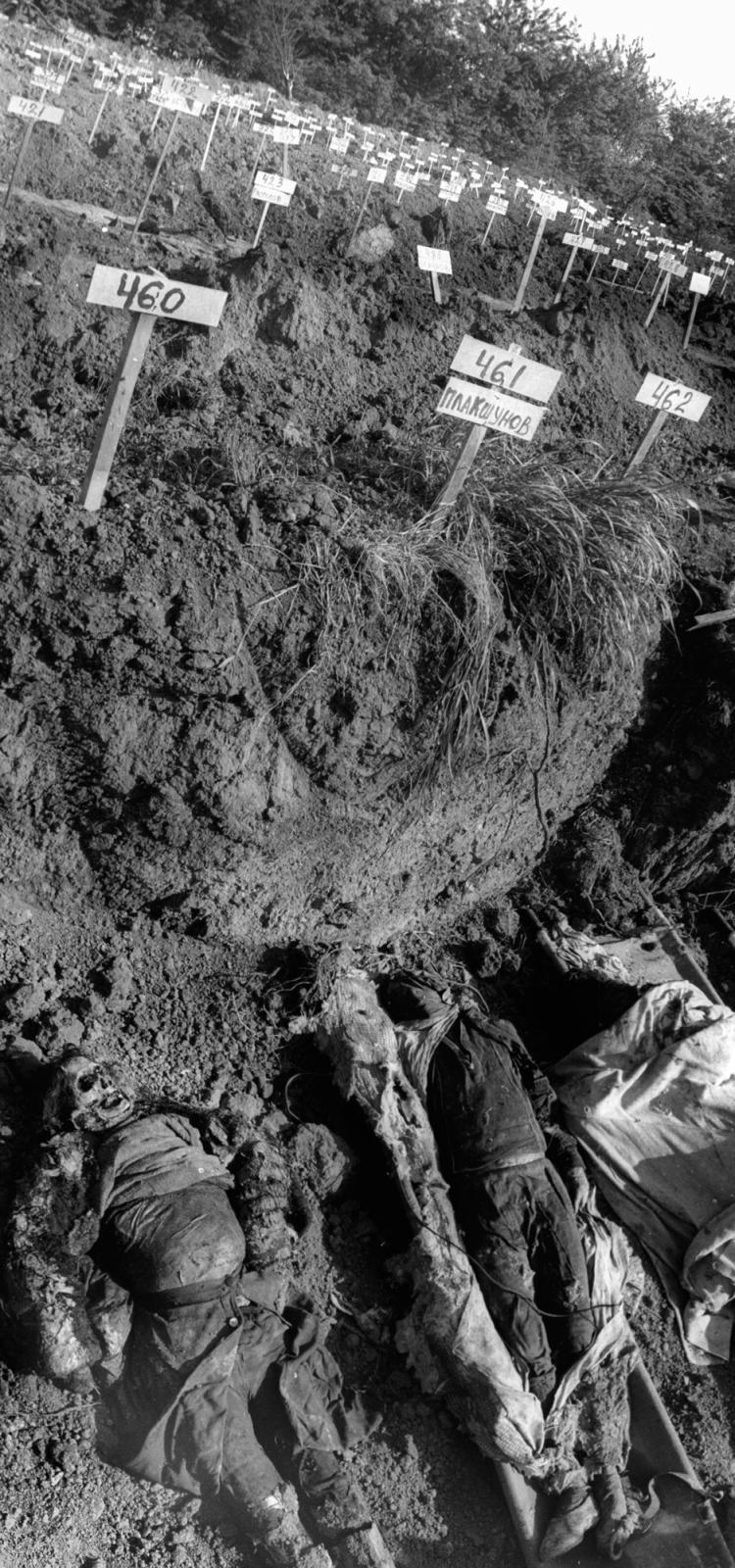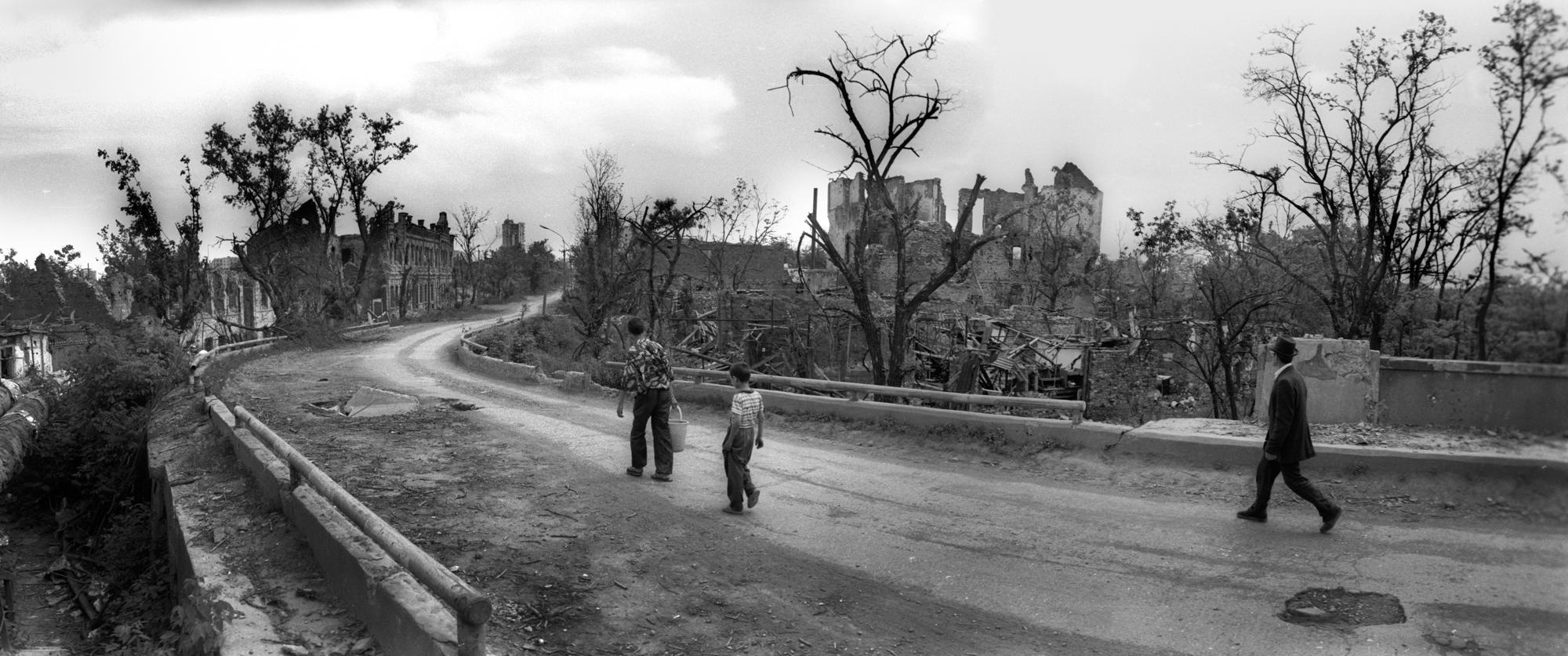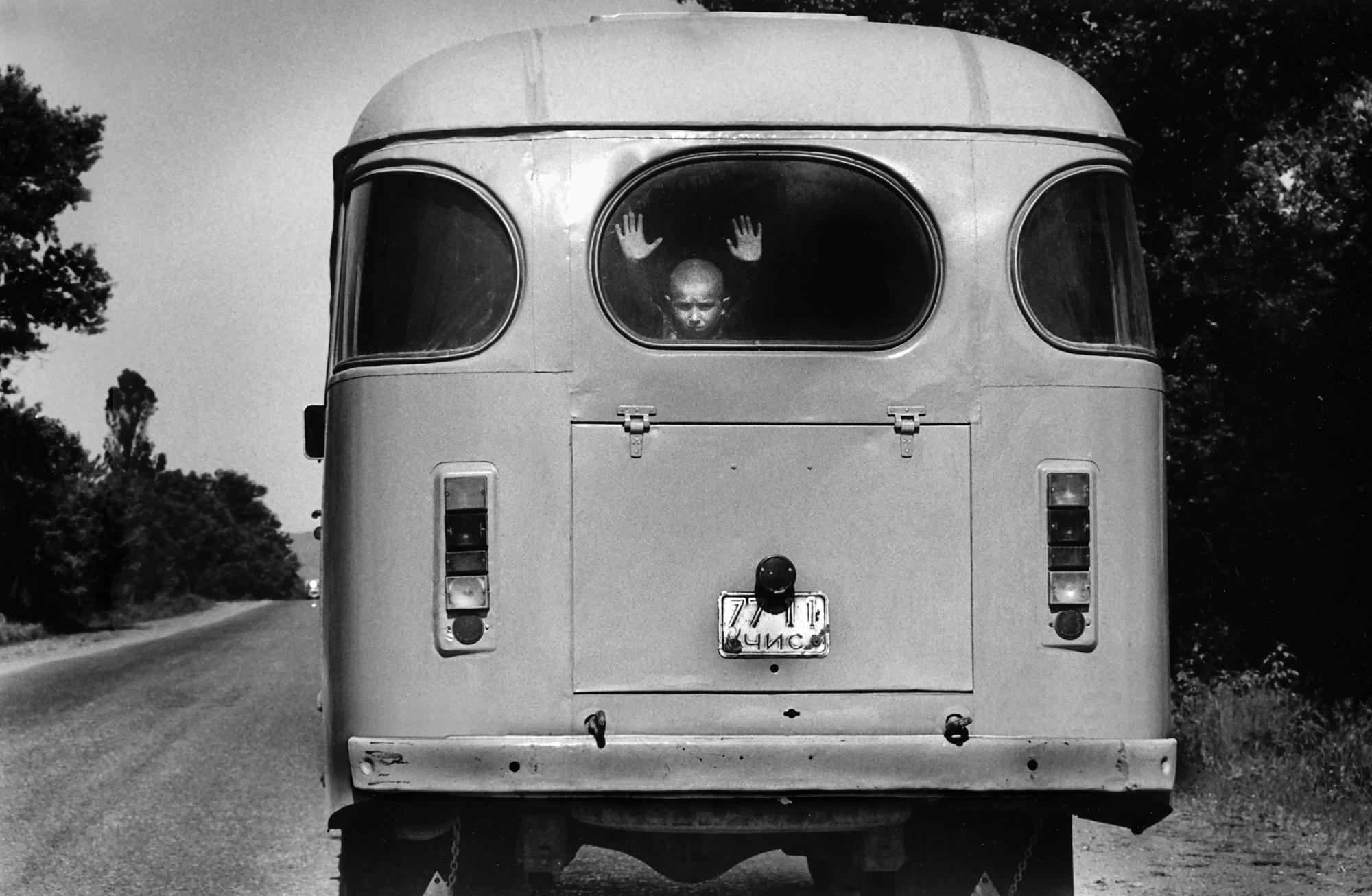When you reach my age, history’s repetition becomes personal: The siege of Kyiv is looking more and more like what I witnessed on my 1995 trip to Grozny, Chechnya, five months after the Russian army had leveled that city.
Ironically, I arrived there from Moscow after covering the 50th anniversary of WWII. Grozny by then was under the control of a battle-hardened, demoralized, and brutal Russian force. We got a taste of that while visiting hospitals, where for example, we met a farmer shot as target practice while plowing his field. I explored Grozny with a solitary walk (probably not the brightest of ideas) to document the destruction. Luckily, the only incident I encountered happened on a corner while I was photographing a mother carrying her baby and several men. A Russian APC approached, and as they passed, the gunner casually fired his high caliber machine gun several feet above our heads. We all froze, the swath of bullets blasting the already bullet riddled wall behind us. Toward the end of that day the streets became deserted, and the soldiers began drinking. Throughout the night, we heard bombs explode and machine guns go off around us, never knowing whether they were from fighting insurgents or firing their weapons in a drunken binge.
In the early days of that war, the reporting was very similar to what we are now hearing from Ukraine. There were Russian conscripts, mostly kids from small towns and villages without the proper training, equipment and food; many of whom were stuck in large convoys of trucks on a road to nowhere. At first, their generals thought this would be a quick war and sent armored columns, including tanks, charging into downtown Grozny from several directions. But the Chechen fighters trapped the long stretch of vehicles and largely annihilated them. Over a thousand Russian troops were killed. As in Ukraine, many Russian prisoners in that initial period said they did not know where they were or who they were fighting. Mothers flew to Grozny to negotiate the release of their sons. As that war started to go bad, the Russian army resorted to firing long range artillery shells, pounding the city relentlessly until they destroyed the whole downtown and much of the surrounding area, as you can see in my photos above.
Several years after my trip to Chechnya, Maggie Paxson and I traveled to Belozersk, Russia, 425 miles north of Moscow, to do a story on the young men sent off to that war. After our visit she wrote, “These boys are between the world of the living and the world of the dead.” https://tinyurl.com/mt8b82kw
I thought back to almost being drafted to fight in Vietnam when I was the age of many of these Russian conscripts. After that war I was sure that the U.S. would never again stupidly engage in a war of choice. That is, until I found myself years later, covering our wars in Iraq and Afghanistan.
Going back to 1995, when I was in Moscow covering the 50th anniversary of WWII, I met many of their famous WWII photographers like Yevgeny Khaldei, who made the iconic image of the Soviet flag waving over the Reichstag in Berlin. They were so proud that they had witnessed the end of fascism. Sadly, long after their passing, President Putin has moved his country toward that very ideal and our former president continues to admire him along with some members of congress. Democracy seems not only fragile around the world, but here too.
And in this moment and against this backdrop, Russia’s war in the Ukraine is following the trajectory of their war in Chechnya 27 years ago. The question is whether the growing outrage around the world will be enough to stop it.
